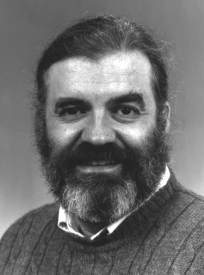

Geographer Finds the �Place� for Bebop�s Expression
by Greta Petry
Roger W. Stump�s "The Emergence of Bebop in New York City," has been chosen among the 5 percent of research papers selected for distribution to the general public from among the 2,400 originally submitted to the Association of American Geographers.
Stump�s paper, along with six others submitted by professors in the University�s Department of Geography & Planning, will use the example of bebop jazz to explore the relationship between place and the processes of innovation integral to popular music. The papers will be presented at the annual meeting of the association, March 25-29 in Boston, Mass. Some 5,000 geographers from around the world are expected to attend.

Roger W. Stump
Bebop emerged during the 1940s as both a reaction against older jazz styles and an expression of innovative artistic impulses within a community of younger jazz musicians. The process of its creation and early development was anchored in the intersection of "nested" locales centered in New York City.
Stump�s analysis examines the diverse nature of these locales and the ways in which they combined to establish a dynamic context for the interaction of bebop�s creators with one another, with their audiences, and with existing practices in the making of jazz. The analysis reveals that different locales played important but quite different roles during specific stages in bebop�s emergence, reflecting the changing relationship between particular locales and the character of bebop as a form of cultural expression.
Most importantly, certain jazz clubs in Harlem provided a setting for the early experimentation that culminated in the bebop style, but the style�s subsequent popularization depended on its exposure in jazz clubs in midtown Manhattan, at first along 52nd Street and later on, nearby sections of Broadway. These findings confirm the significance of place in understanding the dynamic character of popular music, and of popular culture generally.
In addition to Stump, six other faculty members from the Department of Geography & Planning will be presenting papers in Boston: Paul C. Adams, "Walking;" John S. Pipkin, "Geographic Order in Thoreau�s Landscapes;" Christopher J. Smith, "The Transformative Impact of Capital and Labor Mobility on the Chinese City;" Deborah Berman-Santana, "Human Diversity: Key to Global Sustainability?;" Andre Lapenis, "Enhanced Chemical Weathering of Russian Plain During the Last 100 Years;" and Randy Nattis, "Loss of Soil Organic Carbon during the Last 100 Years from the Pasture in the Collective Farm KIM, Russia."